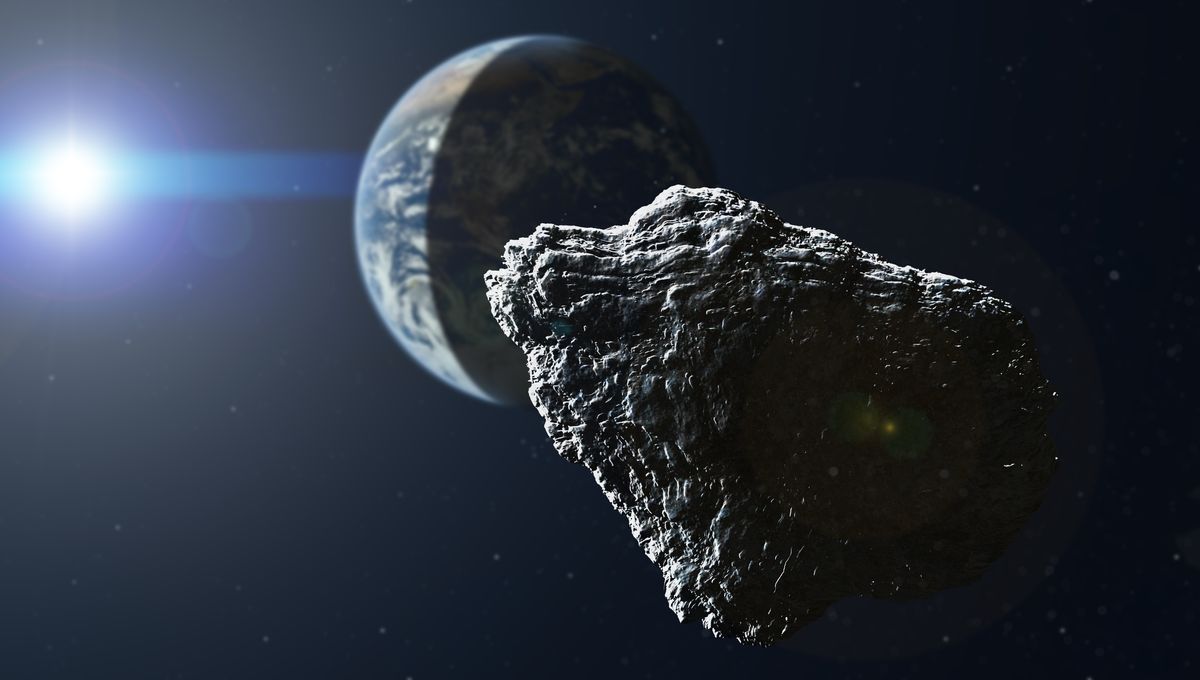
Tomorrow, Earth will have a relatively close encounter with one of the largest known space rocks in the potentially hazardous asteroid class. It is known as 2011 UL21 and it is classed as a “planet-killer” in size. With a mass estimated to be about 21 billion tons, like a small mountain, it is speeding through the solar system at 25 kilometers (16 miles) per second.
If that were to hit us, it would be really bad – but we do not have to worry about that for a long time. It was discovered in 2011, and at that time it had an estimated one-in-a-million chance of hitting the Earth by 2029. Further observations were able to reduce the uncertainty of its orbit pretty quickly. Just a few weeks after the first detection, the chance of it hitting before the end of this decade was dropped to one in 71 million. Now, the chance of it hitting our planet over the next century is basically nil.
Tomorrow’s flyby will bring this space rock about 6.6 million kilometers (4.1 million miles) from our planet. That is 17 times the average Earth-Moon distance. The object is usually described as having a diameter of 2.3 kilometers (1.4 miles), but there are uncertainties on its size and it could be as small as 1.7 kilometers and as large as 3.9 kilometers (1.05 to 2.4 miles). This close approach might help astronomers refine the size.
“The term ‘Potentially Hazardous Asteroid’ (PHA) is a precise formal definition, referring to minor planets larger than approximately 140 meters [459 feet] that can come within 7.5 million km [4.6 million miles] from the Earth,” Gianluca Masi, astrophysicist and scientific director of the Virtual Telescope Project, said in a statement. “In other words, only the largest asteroids capable of approaching close enough to our planet are flagged as PHAs, which does not mean they are going to hit the Earth, but they nonetheless warrant a better monitoring.”
Using data from the Center for Near Earth Object Studies (CNEOS) of the Jet Propulsion Laboratory, Masi estimated that 2011 UL21 is going to be in the top 10 largest asteroids to have come within 7.5 million km (4.6 million miles) of our planet since January 1, 1900. The closest approach of a bigger object in the last several decades was asteroid Toutatis in 2004, but still over a million kilometers (0.6 million miles) away.
2011 UL21 is actually going to get closer than tomorrow’s flyby in 2089, but still far away enough to not give any worry to scientists. Despite the horizon looking relatively safe, NASA and other space agencies remain concerned about space threats. A recent tabletop exercise has shown significant gaps in our preparedness.
This Sunday is Asteroid Day, which aims to raise awareness of this risk and the things we can do to be ready in the event of such a threat.
Source Link: "Planet-Killer" Asteroid To Safely Fly By Earth Tomorrow